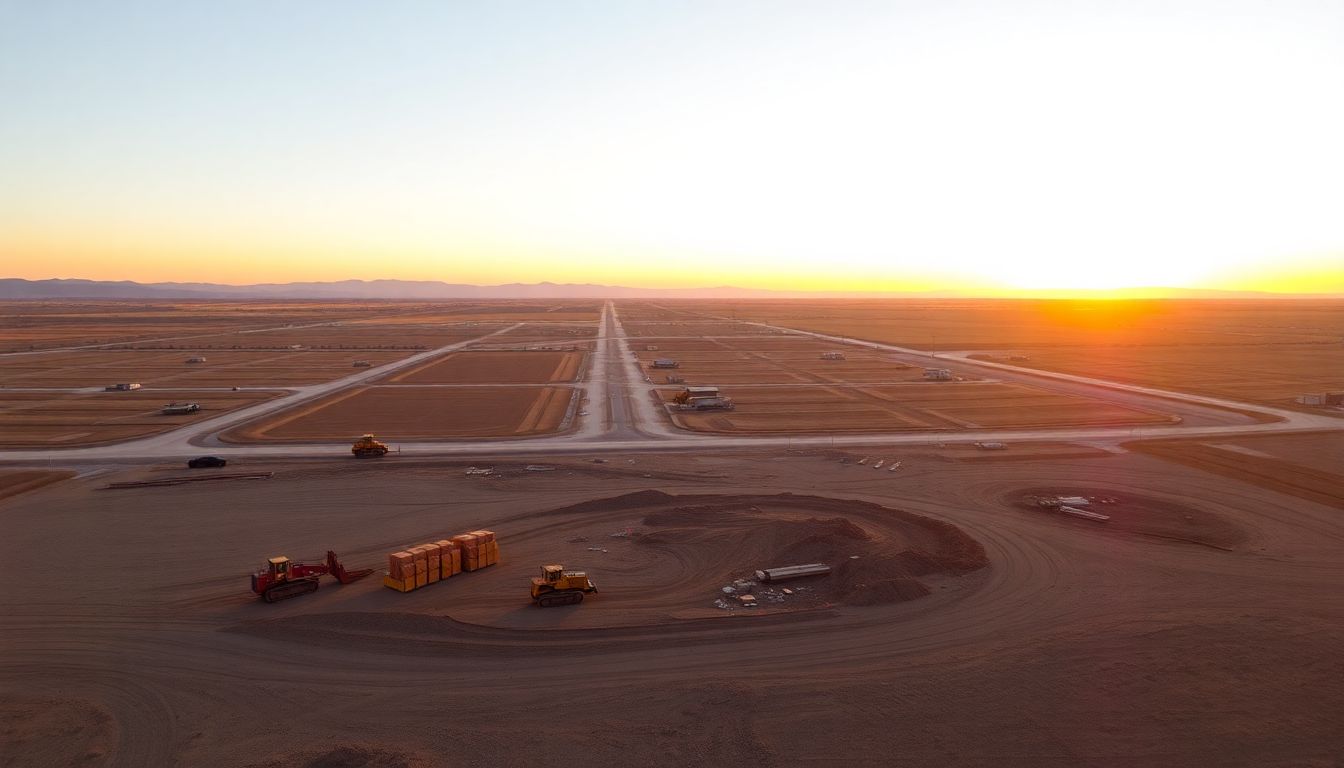“Industrial Land Pricing” Introduction
Industrial land is the lifeblood of any economy; it directly affects the development of factories, warehouses, and distribution centers. For many investors, prices per acre determine where one can invest. But what is the price of industrial land per acre? It’s not straightforward. Prices vary quite a bit depending on where the land could be, what you’re doing with it, among others.
Understanding what drives the price of land enables one to make intelligent choices. From location to market trends, many things affect the cost. Getting started requires a good overview of what determines industrial land prices and what to watch out for as an investor.
Factors Affecting Prices of Industrial Land
Location and Accessibility
Location matters when it comes to land. Do important highways pass through it? Ports? Railroads? Public transportation makes land more valuable.
Take a busy highway versus a tiny dirt country road—the better the roads, the higher price you pay for access. Cities that sit in proximity to major logistics hubs, such as Los Angeles or Houston, usually charge a premium per acre.
All local infrastructure adds to the value of land. New roads, utilities, and other public services equal more growth and more money. Prices tend to increase the closer the land is to urban centers or industrial zones.
Zoning and Land Use Restrictions
Every local area has regulations on what can be built on industrial land. Some areas may be reserved for factories, warehouses, or distribution centers. Some may prohibit certain activities.
The various zones all have rules by which land prices can vary. If you are going to build a huge factory, the zone must be the right one. You should note, however, that sometimes permits or legal issues can be quite cost-increasing, hence, study the locality’s regulation.
Size, Topography, and Land Quality
Smaller parcels can be grossly different in price per acre from bigger plots. Larger plots will normally cost less per acre, but with a high cost of upfront money.
The shape and quality of the land are important as well. Sloped land, poor soil, and areas that are prone to flooding usually command lower prices, but would necessitate additional work. Flat land with good soil is easy to build on and ideal for development.
Market Conditions and Economic Trends
Prices increase when demand for industrial land increases. When many companies desire to build warehouses within a region, prices shoot up for land very quickly.
These rise and fall with the broader economy. During growth, industrial land becomes expensive, while during the slow state of the economy, they tend to either decline or stagnate.
Historic data will hence enable one to determine potential going up or going down of prices within their targeted location.
Regional Differences in Industrial Land Pricing
Industrial Land Prices in the U.S.: An Overall View
- In the Midwest, expect pricing around $10,000–$25,000/acre.
- Costs on the West Coast near Los Angeles can exceed $200,000/acre.
- Southeast prices, cities like Atlanta or Dallas, average $20,000–$50,000 per acre.
Overall, recent data show climbing prices across many major cities, with increased demand for warehouses and factories.
International Perspectives
Prices can also vary greatly by international country.
- In China, top industrial land near cities like Shanghai commands a high premium due to demand.
- In Germany, land within industrial zones and near ports is very costly, but rural areas are relatively cheaper.
- India has lower prices in rural areas compared to urban industrialized centers like Mumbai or Bangalore.
Regional differences can typically be attributed to local economy and land availability with regard to infrastructure.
Urban vs. Rural Industrial Land Pricing
Urban land tends to be more expensive due to proximity to infrastructure and larger markets. Meanwhile, rural land is more affordable but may lack ready access or services, requiring extra development costs. It’s an appealing option for long-term investors willing to build.
Market Research
Starting off with local real estate listings and industry reports can be a good initiation to the search. Average prices can also be discovered with government data. Speak directly to local agents who specialize in prospective industrial properties.
Usually, they will have the inside track on what is happening and what is coming soon to market.
Analyzing Comparable Sales
Find recent sales of similar land nearby. This helps set a realistic price. Keep in mind differences, such as size, access, or land features.
Adjust your comparison based on these factors for accuracy.
Hidden Development Costs and Expenses
Most of these giant costs come years later. You may very well have some environmental issues, access road construction, utility connection, or even attorney fees for obtaining permits.
Plus, pay attention to maintenance, tax, or insurance on an annual basis.
Practical Tips for Buyers and Investors
- Negotiate well: never accept the first offer.
- Talk to neighbors or local officials for insights.
- Engage with professionals who know the market well. Their advice can save money and time.
Conclusion
A good number of factors contribute to the price of industrial land per acre, such as location, land quality, local rules, and trends within the market. Thorough research is essential to avoid surprises.
Keep an eye on regional shifts, study comparable sales, and prepare for extra expenses. Adequate planning could create an opportunity for one to acquire land meeting desired requirements and budget. However, the number one rule is to understand the local market.
